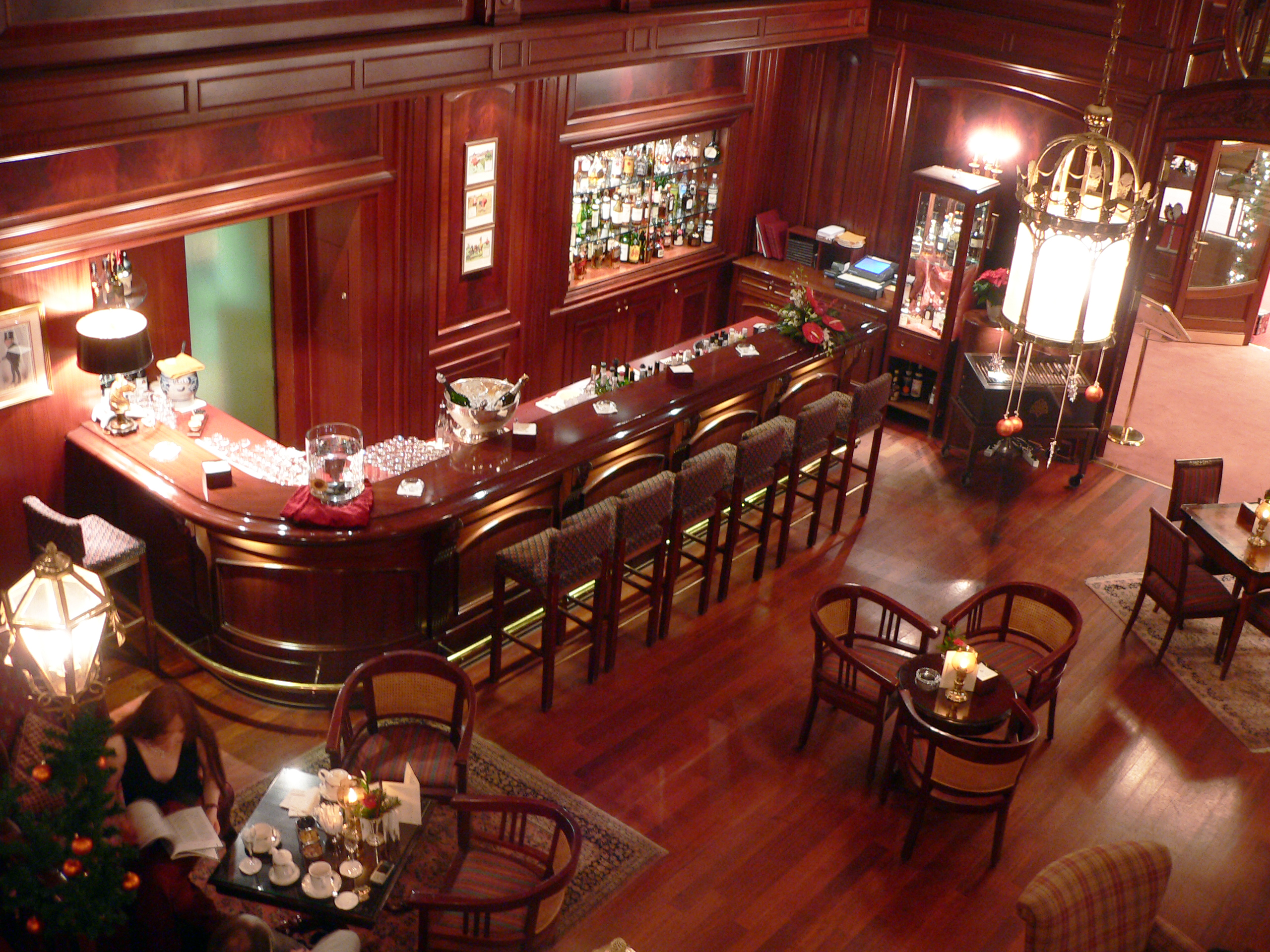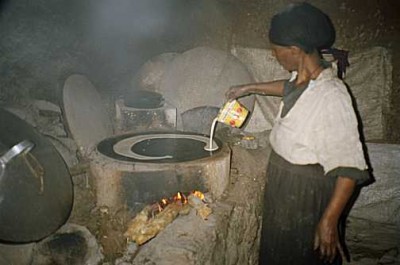|
Surly Bob's
Surly Bob's was a sports bar in Yellowknife, Northwest Territories, Canada owned by Bob Ross and Lyle Denny. It closed in October 2012. It served typical pub food and sponsored a basketball team, also named the Surly Bob's. The bar was located at 4910 50th Ave. History Precursors (1969 - 2003) The establishment was founded in 1969, as The Hoist Room Pub and Grill. In the 1980s, it was known as Millie's Hoist Room. In the 1990s, it was known as The Bistro on Franklin's. In 2000, the restaurant became known as Jose Loco's, when it specialized in Mexican cuisine. Surly Bob's (2003 - 2012) In January 2003, Lyle Denny and Bob Ross acquired Jose Loco's and converted it into a sports bar. It had a full kitchen and Friday and Saturday nights were known as Lobster Night. The Cellar (2013 - 2018) On 8 August 2013, Kyle Thomas reviewed "The Cellar", stating that the food was "good, but generic". The Cellar offered a veggie burger along with a homemade vegan soup special which wa ... [...More Info...] [...Related Items...] OR: [Wikipedia] [Google] [Baidu] |
Bar (establishment)
A bar, also known as a saloon, a tavern or tippling house, or sometimes as a pub or club, is a retail business establishment that serves alcoholic beverages, such as beer, wine, liquor, cocktails, and other beverages such as mineral water and soft drinks. Bars often also sell snack foods, such as crisps or peanuts, for consumption on their premises. Some types of bars, such as pubs, may also serve food from a restaurant menu. The term "bar" refers to the countertop where drinks are prepared and served, and by extension to the overall premises. The term derives from the metal or wooden bar (barrier) that is often located along the length of the "bar". Over many years, heights of bars were lowered, and high stools added, and the brass bar remains today. Bars provide stools or chairs that are placed at tables or counters for their patrons. Bars that offer entertainment or live music are often referred to as "music bars", "live venues", or " nightclubs". Types of b ... [...More Info...] [...Related Items...] OR: [Wikipedia] [Google] [Baidu] |
Halal Meat
''Halal'' (; ar, حلال, ) is an Arabic word that translates to "permissible" in English. In the Quran, the word ''halal'' is contrasted with ''haram'' (forbidden). This binary opposition was elaborated into a more complex classification known as " the five decisions": mandatory, recommended, neutral, reprehensible and forbidden. Islamic jurists disagree on whether the term ''halal'' covers the first two or the first four of these categories. In recent times, Islamic movements seeking to mobilize the masses and authors writing for a popular audience have emphasized the simpler distinction of ''halal'' and ''haram''. The term ''halal'' is particularly associated with Islamic dietary laws and especially meat processed and prepared in accordance with those requirements. In the Quran The words ''halal'' and ''haram'' are the usual terms used in the Quran to designate the categories of lawful or allowed and unlawful or forbidden. In the Quran, the root h-l-l denotes lawfu ... [...More Info...] [...Related Items...] OR: [Wikipedia] [Google] [Baidu] |
Restaurants In The Northwest Territories
A restaurant is a business that prepares and serves food and drinks to customers. Meals are generally served and eaten on the premises, but many restaurants also offer take-out and food delivery services. Restaurants vary greatly in appearance and offerings, including a wide variety of cuisines and service models ranging from inexpensive fast-food restaurants and cafeterias to mid-priced family restaurants, to high-priced luxury establishments. Etymology The word derives from early 19th century from French word 'provide food for', literally 'restore to a former state' and, being the present participle of the verb, The term ''restaurant'' may have been used in 1507 as a "restorative beverage", and in correspondence in 1521 to mean 'that which restores the strength, a fortifying food or remedy'. History A public eating establishment similar to a restaurant is mentioned in a 512 BC record from Ancient Egypt. It served only one dish, a plate of cereal, wild fowl, and onion ... [...More Info...] [...Related Items...] OR: [Wikipedia] [Google] [Baidu] |
Chamber Of Commerce
A chamber of commerce, or board of trade, is a form of business network. For example, a local organization of businesses whose goal is to further the interests of businesses. Business owners in towns and cities form these local societies to advocate on behalf of the business community. Local businesses are members, and they elect a board of directors or executive council to set policy for the chamber. The board or council then hires a President, CEO, or Executive Director, plus staffing appropriate to size, to run the organization. A chamber of commerce may be a voluntary or a mandatory association of business firms belonging to different trades and industries. They serve as spokespeople and representatives of a business community. They differ from country to country. History The first chamber of commerce was founded in 1599 in Marseille, France, as the "Chambre de Commerce". Another official chamber of commerce followed 65 years later, probably in Bruges, then part of the ... [...More Info...] [...Related Items...] OR: [Wikipedia] [Google] [Baidu] |
Curry Goat
(''hseik-tha hnat'') hi, Bakri curry id, kari kambing ms, kari kambing , country = Indian subcontinent and Southeast Asia , region = Indian subcontinent, Southeast Asia (Myanmar, Indonesia and Malaysia) and the Caribbean (Trinidad and Tobago, Jamaica, Guyana and Suriname) , creator = , course = , type = Curry , served = , main_ingredient = Goat meat, curry powder, peppers, curry leaves, Indian spices , variations = , calories = , other = , similar_dish = Mutton curry Goat curry ( Malay: ''kari kambing'', Indonesian: ''kari kambing'' or ''gulai kambing''), Curried Goat, or Curry Goat is a curry dish prepared with goat meat, originating from the Indian subcontinent. The dish is a staple in Southeast Asian cuisine, Caribbean cuisine, and the cuisine of the Indian subcontinent. In the Caribbean and Southeast Asia, the dish was brought to the region by the Indian diaspora, and ... [...More Info...] [...Related Items...] OR: [Wikipedia] [Google] [Baidu] |
Samosa
A samosa () or singara is a fried Indian pastry with a savory filling, including ingredients such as spiced potatoes, onions, and peas. It may take different forms, including triangular, cone, or half-moon shapes, depending on the region. Samosas are often accompanied by chutney, and have origins in medieval times or earlier. Samosas are a popular entrée, appetizer, or snack in the cuisines of South Asia, the Middle Eastern cuisine, Middle East, Central Asian cuisine, Central Asia, East African cuisine, East Africa and their South Asian diasporas. The English word ''samosa'' derives from Hindi word '' ( hi, समोसा), traceable to the Middle Persian language, Middle Persian word ()Lovely triangles ''Hindustan Times'', 23 August 2008. 'triangular pastry'. Similar pastries are call ... [...More Info...] [...Related Items...] OR: [Wikipedia] [Google] [Baidu] |
Indian Cuisine
Indian cuisine consists of a variety of regional and traditional cuisines native to India. Given the diversity in soil, climate, culture, ethnic groups, and occupations, these cuisines vary substantially and use locally available spices, herbs, vegetables, and fruits. Indian food is also heavily influenced by religion, in particular Hinduism and Islam, cultural choices and traditions. Historical events such as invasions, trade relations, and colonialism have played a role in introducing certain foods to this country. The Columbian exchange, Columbian discovery of the New World brought a number of new vegetables and fruit to India. A number of these such as potatoes, tomatoes, Chili pepper, chillies, peanuts, and guava have become staples in many regions of India. Indian cuisine has shaped the history of international relations; the spice trade between India and Europe was the primary catalyst for Europe's Age of Discovery. Spices were bought from India and traded around Euro ... [...More Info...] [...Related Items...] OR: [Wikipedia] [Google] [Baidu] |
Injera
Injera (, ; om, Biddeena; ) is a sour fermented pancake-like flatbread with a slightly spongy texture, traditionally made of teff flour. In Ethiopia, Eritrea, and some parts of Sudan, injera is the staple. Injera is central to the dining process, like bread or rice elsewhere. Ingredients Traditionally, injera is made with just two ingredients – teff flour and water. Teff flour is ground from the grains of '' Eragrostis tef'', also known as teff, an ancient cereal crop from the Ethiopian Highlands. Teff production is limited to certain middle elevations with adequate rainfall, and, as it is a low-yield crop, it is relatively expensive for the average farming household. As many farmers in the Ethiopian highlands grow their own subsistence grains, wheat, barley, corn, or rice flour are sometimes used to replace some or all of the teff content. Teff seeds are graded according to color, used to make different kinds of injera: ''nech'' (white), ''key'' or ''quey'' (red), ... [...More Info...] [...Related Items...] OR: [Wikipedia] [Google] [Baidu] |
Middle Eastern Cuisine
Middle Eastern cuisine or West Asian cuisine includes Arab, Armenian, Assyrian, Azerbaijani, Cypriot, Egyptian, Georgian, Iranian, Iraqi, Israeli, Kurdish, Lebanese, Palestinian and Turkish cuisines. Common ingredients include olives and olive oil, pitas, honey, sesame seeds, dates, sumac, chickpeas, mint, rice and parsley, and popular dishes include ''kebabs'', ''dolmas'', '' falafel'', ''baklava'', yogurt, '' doner kebab'', '' shawarma'' and '' mulukhiyah''. Geography The exact countries considered to be part of the Middle East are difficult to determine as the definition has changed over time and from source to source. Currently the countries that are considered to comprise the Middle East are: Bahrain, Cyprus, Egypt, Iran, Iraq, Israel, Jordan, Kuwait, Palestine, Lebanon, Oman, Qatar, Saudi Arabia, Syria, Turkey, United Arab Emirates, and Yemen. However, Middle Eastern cuisine includes dishes from Arab, Armenian, Assyrian, Azerbaijani, Cy ... [...More Info...] [...Related Items...] OR: [Wikipedia] [Google] [Baidu] |
Yellowknife
Yellowknife (; Dogrib: ) is the capital, largest community, and only city in the Northwest Territories, Canada. It is on the northern shore of Great Slave Lake, about south of the Arctic Circle, on the west side of Yellowknife Bay near the outlet of the Yellowknife River. Yellowknife and its surrounding water bodies were named after a local Dene tribe, who were known as the "Copper Indians" or "Yellowknife Indians", today incorporated as the Yellowknives Dene First Nation. They traded tools made from copper deposits near the Arctic Coast. Its population, which is ethnically mixed, was 19,569 per the 2016 Canadian Census. Of the eleven official languages of the Northwest Territories, five are spoken in significant numbers in Yellowknife: Dene Suline, Dogrib, South and North Slavey, English, and French. In the Dogrib language, the city is known as ''Sǫǫ̀mbak’è'' (, "where the money is"). Modern Yellowknives members can be found in the adjoining, primarily Indigenou ... [...More Info...] [...Related Items...] OR: [Wikipedia] [Google] [Baidu] |
East African Cuisine
East or Orient is one of the four cardinal directions or points of the compass. It is the opposite direction from west and is the direction from which the Sun rises on the Earth. Etymology As in other languages, the word is formed from the fact that east is the direction where the Sun rises: ''east'' comes from Middle English ''est'', from Old English ''ēast'', which itself comes from the Proto-Germanic *''aus-to-'' or *''austra-'' "east, toward the sunrise", from Proto-Indo-European *aus- "to shine," or "dawn", cognate with Old High German ''*ōstar'' "to the east", Latin ''aurora'' 'dawn', and Greek ''ēōs'' 'dawn, east'. Examples of the same formation in other languages include Latin oriens 'east, sunrise' from orior 'to rise, to originate', Greek ανατολή anatolé 'east' from ἀνατέλλω 'to rise' and Hebrew מִזְרָח mizraḥ 'east' from זָרַח zaraḥ 'to rise, to shine'. '' Ēostre'', a Germanic goddess of dawn, might have been a personificatio ... [...More Info...] [...Related Items...] OR: [Wikipedia] [Google] [Baidu] |








